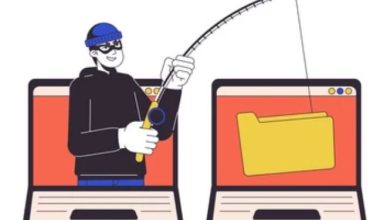The Significance of Intellectual Property Protection in the Virtual World

By Nor Farah Natasha Tajuddin, Ecosystem Builder based at Taylor’s University’s Centre for Research & Enterprise: Knowledge Transfer & Commercialisation

Intellectual property (IP) protection naturally extends to the virtual world safeguarding creative works, ideas, and inventions in digital forms as the digital audience grows larger in this era.
IP protection in the virtual world is complex for a multitude of reasons, particularly due to the nature of digital content, ever-evolving technology, and the lack of clear legal framework. Globally, the World Intellectual Property Organisation (WIPO) recognises the importance of IP protection in the virtual world and has developed guidelines to address the challenges associated with it. These guidelines are in place as a starting point for implementation in line with the IP laws of Malaysia.
Taking part in IP protection in the virtual world
Digital content in the virtual world is typically protected by copyrights, trademarks, and patents. One of the well-known steps taken to protect one’s IP includes digital watermarks for identifying the origin or source of images and videos.
Copyright of creative works, on the other hand, is automatic from the time of creation, although registering them can provide owners additional legal benefits. As such, content creators have the right to take legal action against parties infringing on their creative content rather swiftly due to the nature of the protection itself.
If you are subscribing to any media-streaming platform, you are already paying for the license to legally use the platforms for streaming music, videos, and even buying digital games. By purchasing or buying a license to the content, individuals are directly supporting and contributing to the creation of new and innovative works from the originators.
Viral sharing may be fun, entertaining, and sometimes shocking. However, it is important for the public to respect the IP rights of others, and only share authorised or licensed content throughout the virtual space. One step that has been taken by social media platforms such as Facebook and TikTok to protect viral content as an IP is by setting out policies and procedures for handling IP infringement issues, including reporting copyright infringement and removing infringing content.
Key differences for IP protection in the virtual and real worlds
While the protection of IP in the virtual world and real world shares an overlap, there are also key differences. First is accessibility, whereby in the virtual world IP is accessible and can be shared in a matter of seconds. This increases chances of infringement if due diligence for the IP is not performed prior to using it, including obtaining permission from the rightful owner of the IP in question.
Second is evidence, whereby evidence for infringement is much more difficult to obtain in the digital sphere as infringing content can be quickly deleted or modified by the administrator of a website or a digital platform.
Third is enforcement, which is challenging to implement due to the global nature of the Internet and the different laws and regulations across different jurisdictions. Additionally, identifying an infringer in the virtual world is difficult because they can hide behind anonymous usernames or Virtual Private Networks (VPNs).
Fourth is public domain, which digital content enters much easier, and often without prior permission or proper attribution. This may occur through viral sharing or modification and remixing of content. In the real world, creative content enters the public domain through the expiration of copyright or other legal means.
Why care about IP protection in the virtual world?
The public should care about IP protection in the virtual world for various reasons which are beneficial on both individual and societal levels.
IP protection in the virtual world encourages innovation and creativity because it provides creators and innovators incentives for developing ideas, products, and services. By protecting their creative works and innovations, IP owners are more likely to invest time and resources in enhancing their existing products or services.
Furthermore, IP protection can help protect consumers on the basis of quality control and branding by IP owners. Hence, consumers are protected from harmful or inferior products. As a result, product or service confidence can be effectively instilled by businesses among consumers.
Most importantly, IP protection fosters fair competition among creators and innovators, as well as businesses by levelling the playing field. By preventing copying or infringement on the IP of others, the hard work and originality of creators, innovators, and business owners are acknowledged, and they shall compete based on their own merits.




